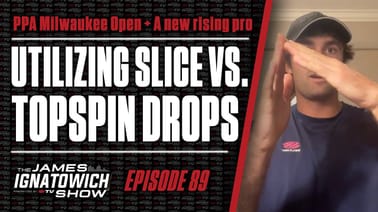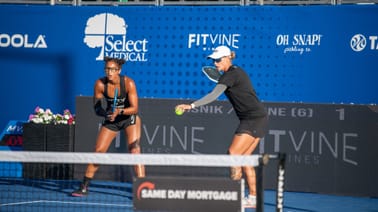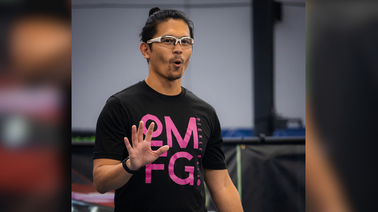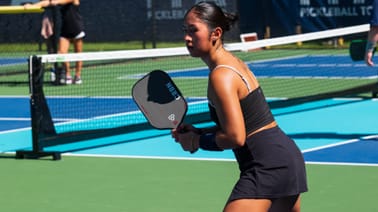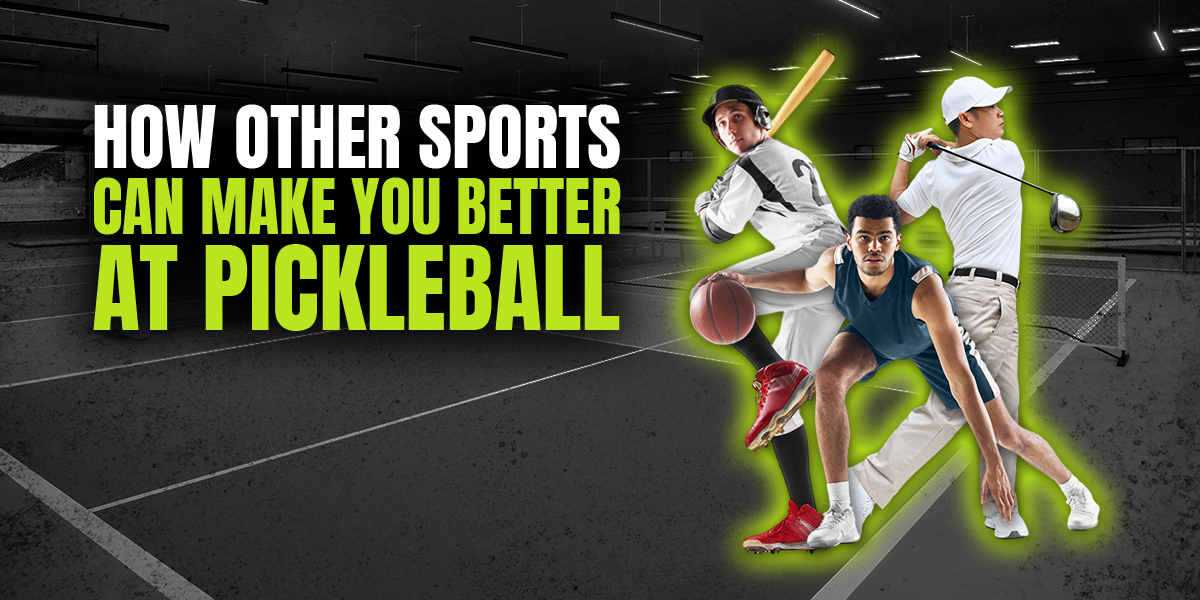
For most sports, true mastery demands years of practice, often starting from childhood. But pickleball defies this norm.
Its low barrier-to-entry and lighter learning curve allows newcomers to at least compete pretty early on in their pickleball career even against those who have played it much longer.
We're not saying a 3.5 can beat a 5.0, but you can at least share a court with them.
Part of the reason for this is because many skills learned from other sports – even non-racquet ones – translate very well to pickleball.
In this article, we dive into a few of those skills that we can take from sports we're all more familiar with and learn how to use them to elevate our pickleball games.
Early preparation from baseball & softball
"America's Pastime" has been around for almost 200 years. Even if you didn't play organized baseball or softball, there's a great chance you were introduced to it as a kid or in an elementary school gym class.
One of the early lessons everyone is taught is to prepare their glove early.
You're taught to get your body underneath a pop fly or behind a ground ball.
Early preparation allows you to catch or field more cleanly thanks to the reduction of your eyes bouncing around (which happens while running) and the stillness of your body when the ball hits the glove.
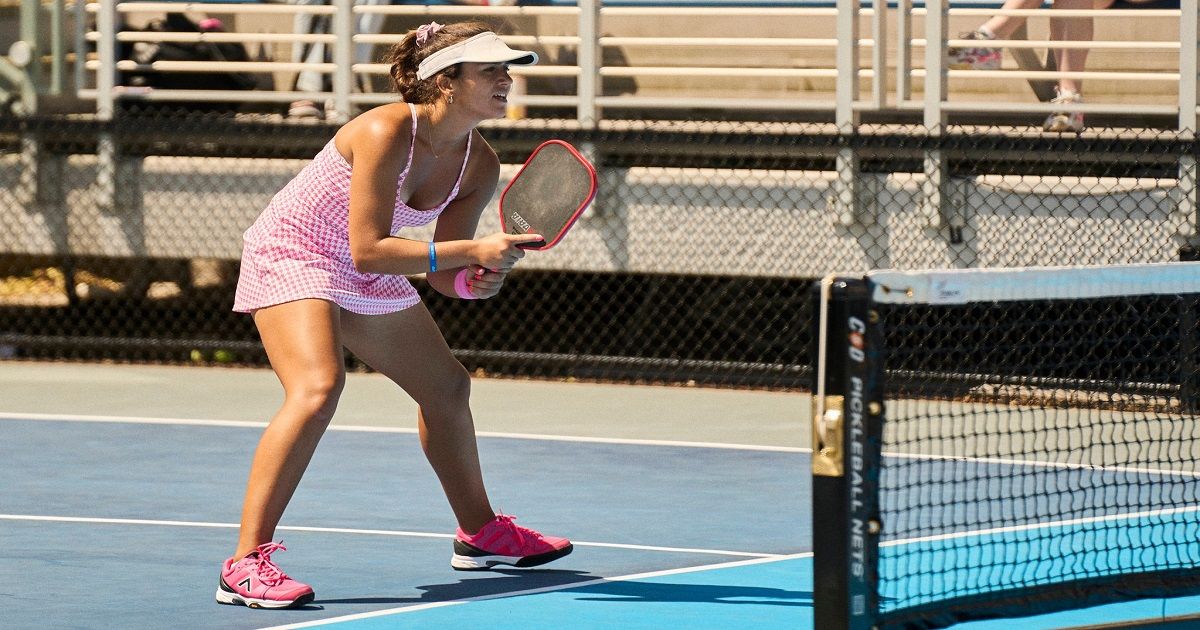
In pickleball, it's the same.
When you recognize the ball is going to a specific spot, you want to move your body to that spot and prep your paddle position early.
For a dink or a volley, this means holding the paddle – almost like you've hit the pause button – as the ball approaches and waiting until the right moment to push the paddle forward or snap your wrist.
Even on drives and returns, early preparation can mean the difference between a well-struck ball that stays inside the lines or one that deflects off the edge for a sideout.
To prep early focus on:
- Moving your feet first, to get to the spot where the ball is going
- Put your paddle out in front of your body, instead of taking a big backswing
- Focus on using as little motion as possible – especially, in taking the paddle back
- Hit through the ball to provide extra power
No matter the shot, getting your body and your paddle to where the ball will end up will ensure you make cleaner strikes at a more consistent pace.
Routines from golf
Even the average golfer learns to build a routine for most of their shots.
With club in hand, you assess your target and your surroundings to uncover the best path to the hole. You take a practice swing (or two or three) and visualize how the ball will fly or roll.
Then, you step to the side, take your stance, place your club head behind the ball and let your muscle memory do its job.
These routines help us to build physical triggers and mentally prepare us for what's about to (or what we want to) happen. In short, routines can eliminate mistakes.
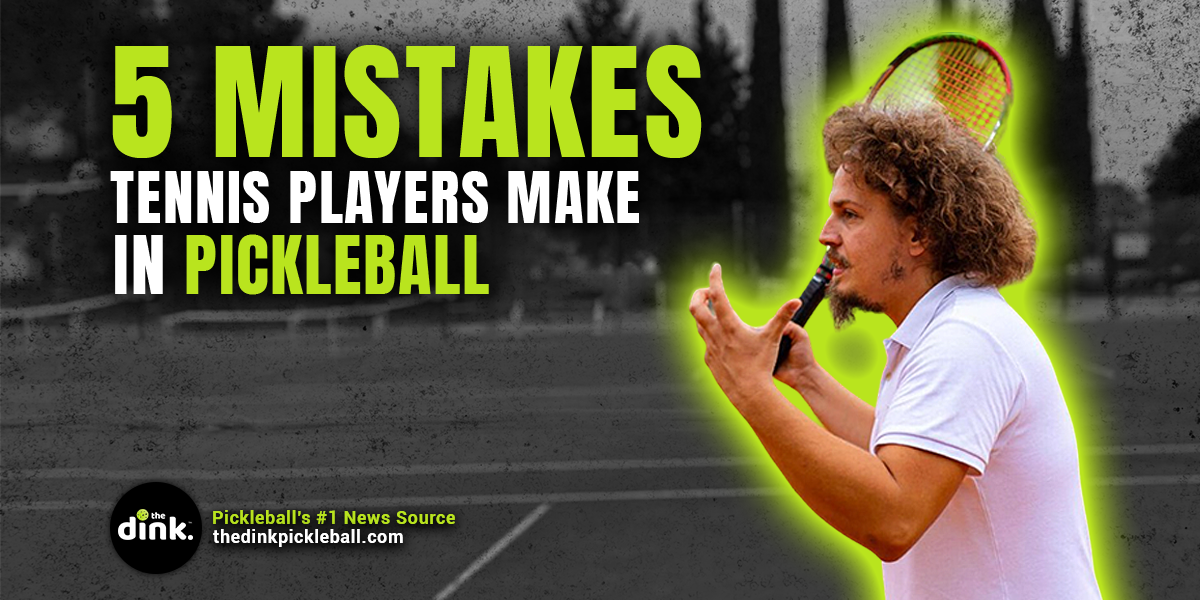
You could just walk up and whack the golf ball, but doing so eliminates your chance of building a repeatable and consistent stroke.
In pickleball, developing a routine before you serve can do the same thing.
How many times have you rushed or served the ball haphazardly only to watch it sail out of bounds or crumble into the net?
You shake your head and think to yourself "Why?!"
A routine before you serve can reduce those mistakes and mentally prepare you for the entire point.
A great serve routine could look something like this:
- Assess and visualize where you want the ball to go
- Set your stance, making sure your feet are firmly planted
- Bounce the ball in front of you while taking a breath
- Release your breath as you serve the ball
It may seem like a lot, but truthfully it only takes a few seconds. Building a routine now can save you lots of headaches down the road.
Balance from basketball
"If you reach, I teach."
This mantra is taught when showing players how to play proper defense in basketball. The idea is that when we reach with our arms, our bodies become off-balance and this makes it easier for players to get past us on their way to the hoop.
In pickleball, the "teach" part of an off-balanced strike is typically a putaway shot down our throats. This is because those types of shots – where we're either on our back foot or fully outstretched – often result in a pop up.
Similar to basketball, the key to staying on balance in pickleball is to have a strong athletic stance where you bend slightly at the knees and you focus on keeping your feet underneath you.
You want to avoid cross-stepping as much as possible when moving laterally across the court. Instead, you'll want to try shuffle stepping or crabwalking.
To do this effectively,
- Bend slightly at your knees while keeping your feet shoulder-width apart
- Keep your paddle out in front of you
- When a ball comes to your left or right, your first instinct should be to move your lower half to get into a good hitting position rather than just reaching down with your arm
If you have mobility issues, then start heading toward the ball as early as possible. As soon as you recognize where it's going, begin with a big step in that direction followed by as many smaller steps as needed.
Resets from volleyball
Many people struggle with resets in pickleball. Oftentimes, this is because they've not prepared their bodies low enough when trying to get under the ball and they use too much wrist or paddle action when making contact.
In volleyball, what's most similar to hitting a reset in pickleball is a bump. This is when you set your forearms parallel to each other and line them up underneath where the ball is going.
You squat down into a low position and allow the momentum of the ball combined with the raising of your body to direct the ball where you want it to go.
It's almost the exact same with resets.
The only difference might be that you typically need less power on the ball in pickleball because often when you're resetting it, the ball has all the pace it needs when it leaves your opponent's paddle.
To hit a successful reset, you should:
- Widen your legs so that you are low to the ground
- Keep your paddle arm out in front of your body, not in close
- Open your paddle face to set a good angle
- Allow the pace of the ball determine how much push you need to give the reset to help it land softly in the kitchen
If you simply fling your arm at the ball, you will not reset it well. Instead, you're going to hit it out or send a meatball for your opponent to crush back over the net.
Of course, there are plenty of other sports out there that we can learn from to take our pickleball game to the next level.
Simply think about some of the things you've learned throughout your sports life and consider what you can use.
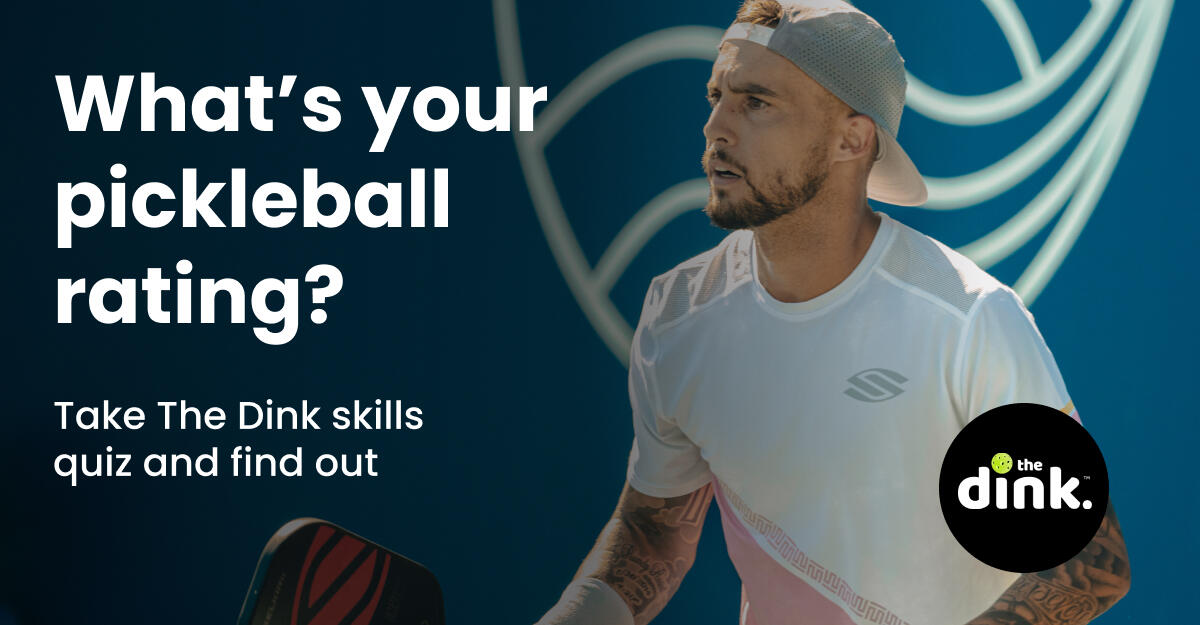

Love Pickleball? Join 100k+ readers for free weekly tips, news & gear deals.
Subscribe to The DinkGet 15% off pickleball gear at Midwest Raquet Sports




